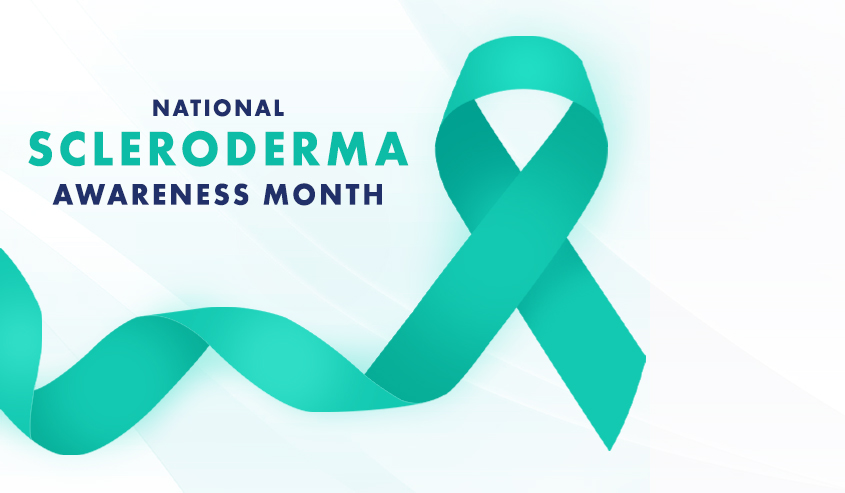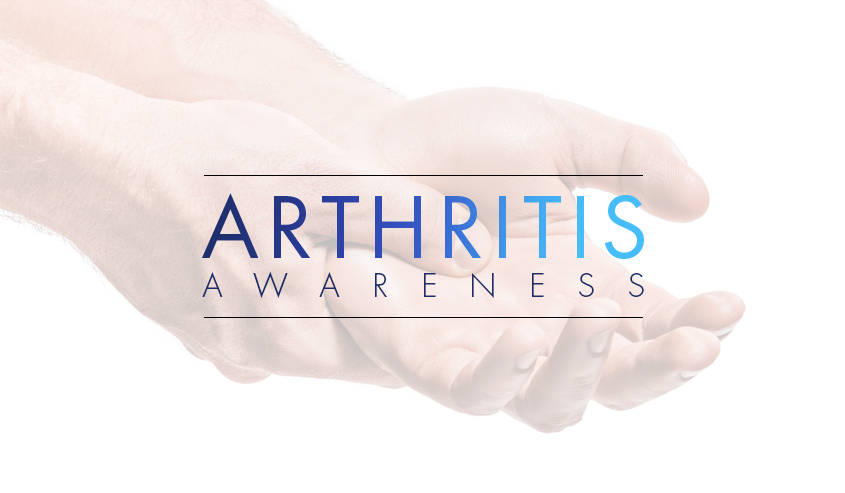The week of June 14th through the 20th is designated as National Men’s Health Week. It was chaired in Congress by Senator Bob Dole and established in 1994 by a Senate Joint Resolution and is celebrated annually during the week preceding Father’s Day. After all, what better way is there to celebrate your father than by encouraging him to take better care of himself? National Men’s Health Week is all about exercise, good diet habits, healthy bodies, and regular doctor check-ups. The Goal The primary purpose of National Men’s Health Week is to encourage the early detection and treatment of diseases common to men and boys...

National Scleroderma Awareness Month
For over 20 years, the chapters of the Scleroderma Foundation and its many support groups have recognized the month of June as National Scleroderma Awareness Month. Scleroderma refers to a group of rare medical conditions that are characterized by the tightening and hardening of your skin and its connective tissues. The disease affects women more than men. Although it’s incurable, there are treatments available that can ease the patient’s symptoms and improve their quality of life. Are there different Types of Scleroderma? Yes. There are a number of different types that affect different areas of the body. In some individuals,...

National Safety Month in the Workforce
The month of June was designated as National Safety Month by the National Safety Council in 1996. The goal was to increase public awareness of the leading health and safety risks in our communities, on roadways, and in the workplace to eventually decrease the number of injuries and fatalities here in the U.S. At Vital Imaging, we are doing our part to ensure safety in our facilities. 4 Topics for 2021 With this being the 25th anniversary of National Safety Month, this year’s 4 topics are as follows: Topic 1: Prevent incidents before they start – in order to create...

National Arthritis Awareness Month
Every year, the month of May is recognized as National Arthritis Awareness Month. The disease impacts 1 in every 5 American adults (more than 50 million), making it the nation’s top cause of disability. In addition to this, 300,000 children and their families are affected by the disease. Unfortunately, those numbers continue to grow. Due to the widespread nature of Arthritis, the Arthritis Foundation, the CDC, and other partners observe this month in honor of Arthritis Awareness Month. Arthritis Statistics to be Aware of One of the first steps towards conquering this disease is educating oneself, learning the facts, and...

National Women’s Health
National Women’s Health Week serves as an annual reminder that all women are more alike than different and need to make their health a priority. Even during the COVID-19 pandemic, you can safely stay active and healthy in a number of ways. We invite all mothers, daughters, sisters, and girlfriends to join Vital Imaging during this week as we encourage you all to prioritize your health during this time. Learn the Steps to Take Towards Better Health When making your health a priority during National Women’s Health Week, you can improve your physical as well as your mental health by...

Global Hand Hygiene Day
May 5th, 2021 is World Hand Hygiene Day, sponsored by the WHO, and is part of the CDC’s “Clean Your Hands Campaign.” Every year on this date, people mobilize to promote the adherence to proper hand hygiene in healthcare facilities worldwide, by protecting healthcare workers as well as their patients from serious infections. Furthermore, this year’s “Save Lives: Clean your hands” campaign has been aligned with the “Year of the Nurse and the Midwife” which promotes the recognition of nurses and midwives as heroes deserving of acknowledgement and appreciation. Clean Your Hands The primary goal of this campaign is recognizing...

National Stroke Awareness
May, 1989 marked the beginning of National Stroke Awareness Month. At that time, President George H.W. Bush signed Proclamation 5975 to create public awareness of strokes and hopefully reduce the incidence of them. The U.S. Government along with the American Heart Association, the National Stroke Association, and a number of other non-profit organizations work in conjunction with one another to educate Americans about preventing strokes and to provide important resources to stroke victims. Knowing the F.A.S.T. Warning Signs The American Heart Association created the acronym “F.A.S.T.” to explain the warning signs of a stroke and enhance the responsiveness to an...
How to Detect If You Have Oral Cancer?
When talking about health problems, mentioning cancer is one of the hardest things to do. The truth is that, with the correct treatment and an early diagnosis, people suffering from this disease may be able to survive. An important factor to keep in mind is how the patient is going to respond to the treatment will determine how fast the patient can recover from this disease. That’s why, if you suspect having oral cancer, you need to seek professional help as soon as possible. Early detection is key! Oral Cancer Symptoms There are several symptoms that could give you a...

Parkinson’s Awareness Month
Having a chronic disease is not something easy at all, but having the support and advice you may need can help you cope with the everyday challenges. Talking about Parkinson’s, people suffering from this disease have the opportunity to get the help and guidance they need from reliable sources. This neurodegenerative disorder is the cause for many people around the world to suffer from lack of coordination, balance, shakiness, stiffness and other problems related. Just like any other chronic disease, it can be hard for people to get adapted to their new situation. That’s why every April is being held...

Stress Awareness Month
In this modern world we’re living, we have found solutions for the everyday problems that have bothered us for so many years. But the truth is that the oldest problems of humanity are still with us, and even worse than in the beginning. Stress. Many people are overwhelmed with problems and worries. Stress is one of the primary causes of mental health problems, such as anxiety and depression, cardiac problems, insomnia, low immune system, and many others. Due to this growing problem, every April has been held as Stress Awareness Month since 1992. In this 30-day challenge, people are encouraged...

